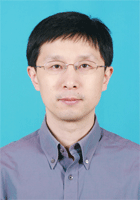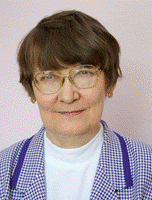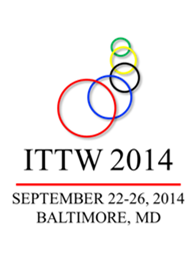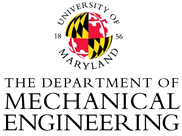Keynote Lectures
- Prof. Hang Ding
- Prof. Detlef Lohse
- Prof. Tatiana Lyubimova
- Dr. Satoshi Matsumoto
- Prof. Issam Mudawar
- Prof. Jamal Yagoobi
Speaker Details and Abstracts:
 |
Department of Modern Mechanics University of Science and Technology of China 230027 Hefei, China
|
Keynote Title: “Air entrainment and cavity generation in solid-liquid impact”
We investigate the fluid dynamics in solid-liquid impact by experiments and numerical simulations, particularly the air entrainment and cavity generation. In these interesting phenomena the motion of contact line, where solid/liquid/gas meet, plays an important role, e.g., a cavity is formed if and only if the contact line eventually rests on the side of the solid object. In this talk we consider a cylinder plunging into a liquid pool and focus on the flow mechanisms that results in pinned contact lines. In experiments the dynamic process of the impact is recorded by a high-speed camera (up to one million frames per second). In simulations, the flows are resolved by solving the Navier-Stokes equations and Cahn-Hilliard equation, with moving contact lines being modeled by a diffuse interface model. The numerical results are validated by comparing against the experiments under the same flow conditions, with respect to the cavity shape and the contact line position. Then, they are used to analyze the motion of contact lines and the resultant flow patterns. The transition of flow phenomena are investigated through parametric simulations over relevant ranges of Weber and Reynolds numbers and contact angles. The effect of parameters including geometry of the solid object, wettability, impact speed and viscosity, on the flow behaviors will be reported in the talk.
 |
Prof. Detlef Lohse Enschede 7500AE, The Netherlands
|
Keynote Title: "Floating on Air"
A drop impacting on a solid surface deforms before the liquid makes contact with the surface. We directly measure the time evolution of the air layer profile under the droplet using high-speed color interferometry, obtaining the air layer thickness before and during the wetting process and the volume of the entrained droplet. This volume shows a maximum as function of the impact velocity. We physically explain this maximum as a balance between capillary and inertial effects. The experiments are complemented by numerical simulations, based on potential flow for the impacting droplet and a lubrication theory for the gas layer in between the droplet and the surface, and by scaling laws which we derived analytically.
The work is then extended in various directions: For the drop impact on a hot surface heated above the liquid’s boiling point, the droplet either immediately boils when it contacts the surface (‘‘contact boiling’’), or without any surface contact forms a Leidenfrost vapor layer towards the hot surface and bounces back (‘‘gentle film boiling’’), or both forms the Leidenfrost layer and ejects tiny droplets upward (‘‘spraying film boiling’’). We also look at the maximum spreading of impacting droplets on such heated surfaces, which is much further than for the impact on non-heated surfaces and shows universal scaling behavior. We also explain under what conditions splashing is achieved and connect it to the vapor and gas flow under the droplet.
In the lecture we will not only show the (beautiful!) phenomena with high-speed visualizations and account for them theoretically, but we will also address various applications of our research in the industrial context.
 |
Institute of Continuous Media Mechanics UB RAS
|
Presentation Title: "Multiphase Systems Under Vibrations in Different Gravity Conditions"
It is known that the vibrations make strong influence on the behaviour of multiphase systems. Vertical vibrations of high enough intensity could stabilize the equilibrium state of a two-layer system in gravitational field in which more dense fluid is located above the less dense one and horizontal vibrations could create new stable equilibrium state with the inclined fluid interface. In the talk the effects of vibrations on the behaviour of multiphase systems in different gravity conditions are discussed. First part of the talk concerns tangential vibration effect on fluid interfaces. In normal gravity condition under sufficiently intensive tangential vibrations the planar fluid interface becomes unstable and the formation of frozen wave is observed. Numerical simulation, experiments under magnetic compensation of gravity and space experiments performed in parabolic flight have shown that in microgravity conditions the instability of fluid interface results in the formations of band pattern. The question on the physical mechanisms of the wavelength selection is discussed in the talk. The second part of the talk concerns vibration effect on the behaviour of bubbles and drops. High-frequency-vibration-induced average effects, non-linear and parametric resonances of forced oscillations of the bubbles and drops suspended in the oscillating liquid and the dynamics of sessile drop on oscillating rigid substrate are discussed.
 |
Institute of Space and Astronautical Science
|
Presentation Title: "Achievements and perspectives of space experiment on Marangoni convection onboard the ISS"
Space experiment on Marangoni convection induced in the large liquid bridge was started to observe thermocapillary flow under microgravity environment onboard the International Space Station (ISS). The liquid bridge of silicone oil is formed between a pair of solid disks. The diameter of disks is 10, 30 or 50 mm. The experiments are performed while changing the parameters such as temperature difference between the disks, aspect ratio, and oil viscosity. Objectives of our study are (1) to reveal transition processes from steady to oscillatory, chaos and turbulent flows, (2) to clarify the mechanism of flow transition, (3) to make clear universality or singularity among typical convective instability such as Rayleigh–Bénard convection, Taylor-Couette flow and so on. Now we almost achieve first objective through Marangoni experiment on KIBO with a lot of fruitful results. JAXA Marangoni project will continue until 2016 and obtain data systematically, then a lot of open problems concerning the instability are expected to solve.
 |
Boiling and Two-phase Flow Laboratory West Lafayette, IN 47907, USA
|
Keynote Title: "Criteria for Negating Influence of Gravity on Flow Boiling Critical Heat Flux in Space Systems"
An effective means to reducing the size and weight of future space vehicles is to replace present mostly single-phase thermal management systems with two-phase counterparts. By capitalizing upon both latent and sensible heat of the coolant rather than sensible heat alone, two-phase thermal management systems can yield orders of magnitude enhancement in flow boiling and condensation heat transfer coefficients. Critical heat flux (CHF) is a primary concern when implementing flow boiling in reduced gravity, with microgravity inducing vanishingly small CHF values at very low coolant flow rates. While high coolant flow rates can overcome the detrimental effects of reduced gravity, limited power budget places stringent limits on pumping power and therefore coolant flow rate in a space system. This creates a need to determine the minimum flow conditions that negate gravity effects. Exceeding this minimum enables the implementation of the vast body of published CHF data, correlations and models developed from terrestrial studies for design of thermal management systems for space applications. This presentation will examine CHF data measured both in parabolic flight and ground experiments; the latter were performed at different orientation relative to Earth’s gravity. Using FC-72 as working fluid, different CHF regimes are identified for the ground tests for different orientations, mass velocities and inlet qualities. Low mass velocities are shown to produce the greatest sensitivity to orientation, while high mass velocities greatly reduce this influence, especially for high inlet qualities. It is also shown that the influence of orientation can be negated by simultaneously satisfying three separate criteria: overcoming the influence of gravity perpendicular to the heated wall, overcoming the influence of gravity parallel to the heated wall, and ensuring that the heated wall is sufficiently long to ensure liquid contact. These criteria are combined to determine the minimum mass velocity required to negate gravity effects in both terrestrial and space applications.
 |
Department of Mechanical Engineering Worcester, Massachusetts
|
Keynote Title: "Electrohydrodynamically Driven Two-Phase Heat Transport Devices for Space and Ground Applications"
Electrohydrodynamic (EHD) conduction pumping of a dielectric liquid arises from the interaction of the induced electric fields and flow fields via the Coulomb force. The required free charges come from the dissociation and recombination of neutral electrolytes present in the fluid. When the external electric field exceeds a threshold, the rate of dissociation exceeds that of recombination. There is a non-equilibrium heterocharge layer that forms in the vicinity of each electrode due to ion motion caused by the Coulomb force. The attraction of the ions present within the heterocharge layers to the adjacent asymmetric electrodes of a given pair causes bulk fluid motion in the desired direction.
This presentation will illustrate the EHD conduction pumping mechanism and its resultant transport characteristics. Specifically, the heat and mass transport resulting from EHD conduction pumping of a dielectric fluid in macro-, meso-, and micro-scales in the presence and absence of phase change (liquid/vapor) will be described. Furthermore, the recent results of two-phase heat transport experiments that were conducted on board variable-gravity parabolic flights will be presented.
From an application perspective, the EHD conduction pumping technology is expected to provide technological advances that will support NASA's various missions. EHD pumps are simple in design, light weight, non-mechanical, free of vibrations and noise, and they allow for effective active control of heat transfer and mass transport. EHD pumps require minimal electric power to operate. The resultant heat transport capacity is typically three orders of magnitude larger than the electric input power.


